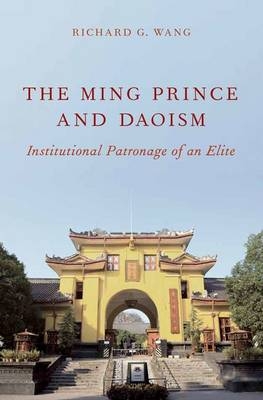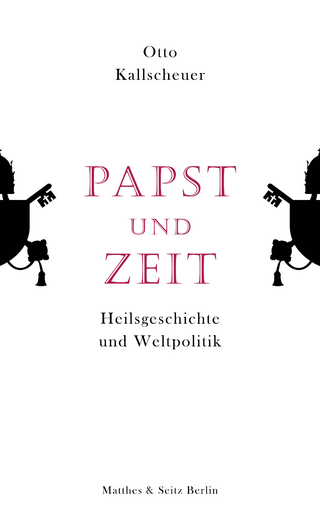
The Ming Prince and Daoism
Institutional Patronage of an Elite
Seiten
2012
Oxford University Press Inc (Verlag)
978-0-19-976768-7 (ISBN)
Oxford University Press Inc (Verlag)
978-0-19-976768-7 (ISBN)
By illuminating the role princes played in local religion during the Ming dynasty (1368-1644), Richard Wang demonstrates in The Ming Prince and Daoism that the princedom served to mediate between official religious policy and the commoners' interests.
Scholars of Daoism in the Ming dynasty (1368-1644) have paid particular attention to the interaction between the court and certain Daoist priests and to the political results of such interaction; the focus has been on either emperors or Daoist masters. Yet in the Ming era a special group of people patronized Daoism and Daoist establishments: these were the members of the imperial clan, who were enfeoffed as princes. In addition to personal belief and self-cultivation, a prince had other reasons to patronize Daoism. As the regional overlords, the Ming princes like other local elites saw financing and organizing temple affairs and rituals, patronizing Daoist priests, or collecting and producing Daoist books as a chance to maintain their influence and show off their power. The prosperity of Daoist institutions, which attracted many worshippers, also demonstrated the princes' political success. Locally the Ming princes played an important cultural role as well by promoting the development of local religions. This book is the first to explore the interaction between Ming princes as religious patrons and local Daoism. Barred by imperial law from any serious political or military engagement, the Ming princes were ex officio managers of state rituals at the local level, with Daoist priests as key performers, and for this reason they became very closely involved in Daoist clerical and liturgical life. By illuminating the role the Ming princes played in local religion, Richard Wang demonstrates in The Ming Prince and Daoism that the princedom served to mediate between official religious policy and the commoners' interests.
Scholars of Daoism in the Ming dynasty (1368-1644) have paid particular attention to the interaction between the court and certain Daoist priests and to the political results of such interaction; the focus has been on either emperors or Daoist masters. Yet in the Ming era a special group of people patronized Daoism and Daoist establishments: these were the members of the imperial clan, who were enfeoffed as princes. In addition to personal belief and self-cultivation, a prince had other reasons to patronize Daoism. As the regional overlords, the Ming princes like other local elites saw financing and organizing temple affairs and rituals, patronizing Daoist priests, or collecting and producing Daoist books as a chance to maintain their influence and show off their power. The prosperity of Daoist institutions, which attracted many worshippers, also demonstrated the princes' political success. Locally the Ming princes played an important cultural role as well by promoting the development of local religions. This book is the first to explore the interaction between Ming princes as religious patrons and local Daoism. Barred by imperial law from any serious political or military engagement, the Ming princes were ex officio managers of state rituals at the local level, with Daoist priests as key performers, and for this reason they became very closely involved in Daoist clerical and liturgical life. By illuminating the role the Ming princes played in local religion, Richard Wang demonstrates in The Ming Prince and Daoism that the princedom served to mediate between official religious policy and the commoners' interests.
Assistant Professor of Chinese Language and Literature, University of Florida
Prologue ; Chapter One: Ming Princes: An Overview ; Chapter Two: Princely Ritual Institutions ; Chapter Three: Ming Princes and Daoist Ritual ; Chapter Four: Cultivation and Book ; Chapter Five: Temple Patronage ; Chapter Six: Literary Patronage ; Chapter Seven: Princely Contacts with Clerics and Fashion of Daoist Names ; Epilogue: The Multi-faceted Princely Patronage of a Daoist Temple ; Appendix A: Genealogical Chart of the Ming Emperors and Their Lines of Descent ; Appendix B: The numbers of princes under each emperor ; Notes ; Bibliography ; Index
| Verlagsort | New York |
|---|---|
| Sprache | englisch |
| Maße | 236 x 152 mm |
| Gewicht | 558 g |
| Themenwelt | Geisteswissenschaften ► Geschichte ► Regional- / Ländergeschichte |
| Geschichte ► Teilgebiete der Geschichte ► Religionsgeschichte | |
| Geisteswissenschaften ► Religion / Theologie ► Buddhismus | |
| Geisteswissenschaften ► Religion / Theologie ► Weitere Religionen | |
| ISBN-10 | 0-19-976768-8 / 0199767688 |
| ISBN-13 | 978-0-19-976768-7 / 9780199767687 |
| Zustand | Neuware |
| Haben Sie eine Frage zum Produkt? |
Mehr entdecken
aus dem Bereich
aus dem Bereich
Von den Anfängen bis zur Gegenwart
Buch | Hardcover (2022)
C.H.Beck (Verlag)
CHF 47,60
Herkunft, Blüte, Weg nach Osten
Buch | Hardcover (2024)
C.H.Beck (Verlag)
CHF 55,90
Heilsgeschichte und Weltpolitik
Buch | Hardcover (2024)
Matthes & Seitz (Verlag)
CHF 61,60


